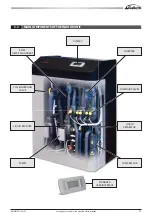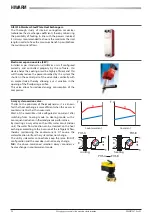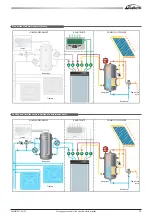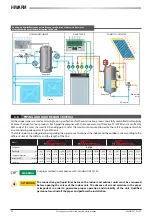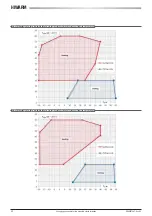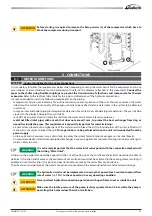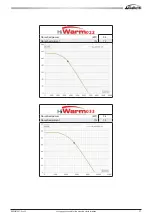
HIWARM
T
R
T
R
R
POS.A
cooling
user
R
POS.B
heating
user
POS.A
POS.B
24
All copying, even partial, of this manual is strictly forbidden
RG66007967 - Rev 02
4-way cycle inversion valve:
Thanks to the principles of Thermodynamics, it is a known
fact that heat exchange is more efficient when this occurs in
countercurrent rather than cocurrent.
Most of the reversible units configured as cocurrent after
switching from Cooling mode to Heating mode, with a
consequent reduction in thermodynamic performance.
By inserting a 4-way valve on the utility water circuit (indoor
unit) the water flow direction can be inverted on the heat
exchanger according to the inversion of the refrigerant flow,
thereby maintaining the countercurrent. Of course, the
water direction to/from the system does not change.
The utility side water connections keep the same IN/OUT
configuration and the user does not notice any change.
N.B.:
the above-mentioned selection always considers a
heat exchange in countercurrent mode.
Countercurrent
Cocurrent
Electronic expansion valve (EEV):
Installed as per standard on all HiWarm units. If configured
correctly and controlled properly by the software, this
device helps the cooling circuit be highly efficient and this
will thereby reduce the power absorbed by the system The
shutter in the central part of the valve slides vertically with
an ample stroke, thereby allowing a vast variation in the
opening of the fluid passage orifice.
This valve allows for reduced energy consumption of the
compressor.
AISI 316 Stainless Steel Plate Heat Exchangers:
The thorough study of internal corrugation maximizes
turbulence (heat exchange coefficient), thereby minimising
the possibility of fouling. In line with the powers involved,
it is always recommended to choose the maximum thermal
length in order to have the maximum benefits possible from
the countercurrent flows.












